"Did you know that new riders are twice as likely to be involved in a motorcycle accident within their first year? The right beginner motorcycle riding tips can be your key to a safe, confident start."
Essential Beginner Motorcycle Riding Tips to Start Safely
Starting your riding journey can be both thrilling and intimidating. Beginner motorcycle riding tips are designed to lower the learning curve, ensuring you develop solid motorcycle safety habits from day one. Unlike seasoned riders, beginners often struggle with core skills, proper safety gear selection, and recognizing potential road hazards. It's important to lay the foundation for successful riding by learning the essentials—this means practicing in an empty parking lot , understanding your motorcycle controls , and never skipping on safety gear. Remember, safe riding habits start long before you hit public roads.
No matter your skill level , focusing on motorcycle riding tips tailored for beginners can have a major impact on your progress and safety. Simple acts, like mastering your clutch lever, using both the front brake and rear brake smoothly, and always performing a pre-ride check, will help you avoid critical mistakes. These actions allow you to build confidence in low speed maneuvering, reduce accident risk, and prepare for unexpected situations. Let's explore the top beginner tips and see how each one can empower you to ride a motorcycle safely, with confidence and control.

-
Discover the most important beginner motorcycle riding tips every new rider needs.
What You'll Gain from These Beginner Motorcycle Riding Tips
Choosing to learn from proven riding tips for beginners means you'll gain much more than just technical skills. You'll develop road confidence that comes from understanding how to react in challenging scenarios, from making a safe left turn to handling your motorcycle in adverse weather. With time and practice, these beginner motorcycle riding tips will help you recognize the value of defensive riding and the importance of always wearing the right safety gear . The journey from novice to experienced rider is built on practical knowledge—mastering clutch control , practicing low speed maneuvers in a parking lot, and understanding critical elements of motorcycle safety .
What truly sets new riders apart is a willingness to learn, ask questions, and remain open to continuous improvement. You'll increase your confidence with every ride, and you'll start to anticipate the actions of car drivers, spot road hazards before they pose a threat, and make every ride safer and more enjoyable—no matter your starting skill level .
-
Increased road confidence
-
Proven motorcycle riding tips for challenging scenarios
-
Greater understanding of motorcycle safety
-
Practical knowledge of safety gear, low speed control, and more
Fundamental Motorcycle Riding Skills Every Beginner Should Master
Learning How to Ride: Developing Core Motorcycle Riding Techniques
Learning how to ride a motorcycle begins with mastering fundamental skills. The most critical is maintaining an upright posture and strong sense of balance, which keeps you stable at both high and low speeds . A proper riding position—with relaxed arms, bent elbows, and eyes scanning far ahead—will enhance your control and confidence regardless of your bike’s engine size . New riders should always practice slow, smooth acceleration and braking in a safe parking lot environment, which reduces anxiety when you later tackle more complex roads.
Next, focus on throttle and brake control. Apply gentle, progressive pressure to the front brake and gradually squeeze the rear brake , especially during stops or tight turns. Too much brake can cause skidding or loss of balance, while too little will not slow you in time to avoid hazards. Understanding clutch control is equally crucial: smoothly release the clutch lever as you gently accelerate, preventing stalling and ensuring smooth starts, particularly on inclines. Mastering these basics in controlled environments lays the groundwork for advanced riding skills.
-
Upright posture and balance
-
How to control throttle and brakes effectively
-
Clutch control for smooth starts

Riding a Motorcycle: Understanding the Basics for Beginners
To ride a motorcycle with safety and ease, familiarize yourself with every control: throttle, clutch, brakes, turn signals, and horn. Many beginners benefit from a step-by-step pre-ride checklist, ensuring no detail is overlooked. Always check your tire pressure and tread, fluid levels, brake response, and lights before heading out; these habits are especially important for staying safe as a new rider.
Low speed maneuvering exercises help bridge the gap between theory and real-world traffic. Try practicing figure-eights, U-turns, and emergency stops in an empty parking lot . These drills sharpen your balance, throttle, and brake skills, especially for those tricky left or right turns at intersections. Gradually, with repetition, you’ll find it easier to ride under pressure and respond calmly to unpredictable car drivers or sudden road conditions.
-
Getting familiar with your motorcycle controls
-
Pre-ride inspection checklist
-
Practice exercises for low speed maneuvering
|
Skill |
Description |
Practice Drill |
|---|---|---|
|
Clutch Control |
Manages power for smooth starts |
Parking lot "duck walk" |
|
Braking |
Even, progressive stoppage |
Emergency stops in open space |
|
Cornering |
Navigating curves safely |
Figure-eight exercises |
Motorcycle Safety: Staying Protected with the Right Gear and Mindset
Safety Gear Every Beginner Needs for Motorcycle Riding
Investing in proper safety gear is a non-negotiable part of responsible riding. The foundation starts with a full-face helmet —preferably one that's DOT or ECE certified—which drastically reduces your risk of head injury in a motorcycle accident . Pair this with an armored jacket and pants, both designed to protect against road rash and impact. Gloves with reinforced palms offer both safety and grip, while sturdy motorcycle boots provide critical ankle support and help prevent foot injuries.
Wearing the right gear isn't just about comfort; it's your second skin on the road. Statistically, riders with complete safety gear walk away from accidents with fewer injuries. Don’t skip on quality for the sake of style—choose gear that fits well and meets current safety standards. If you’re unsure where to start, most motorcycle safety courses offer recommendations, and seasoned riders are usually happy to share their favorite brands and tips for maximum protection.
-
Full-face helmet (DOT/ECE certified)
-
Armored jacket and pants
-
Riding gloves with reinforced palms
-
Motorcycle boots for ankle support
"Proper safety gear can reduce the risk of head injury in a motorcycle accident by up to 69%."
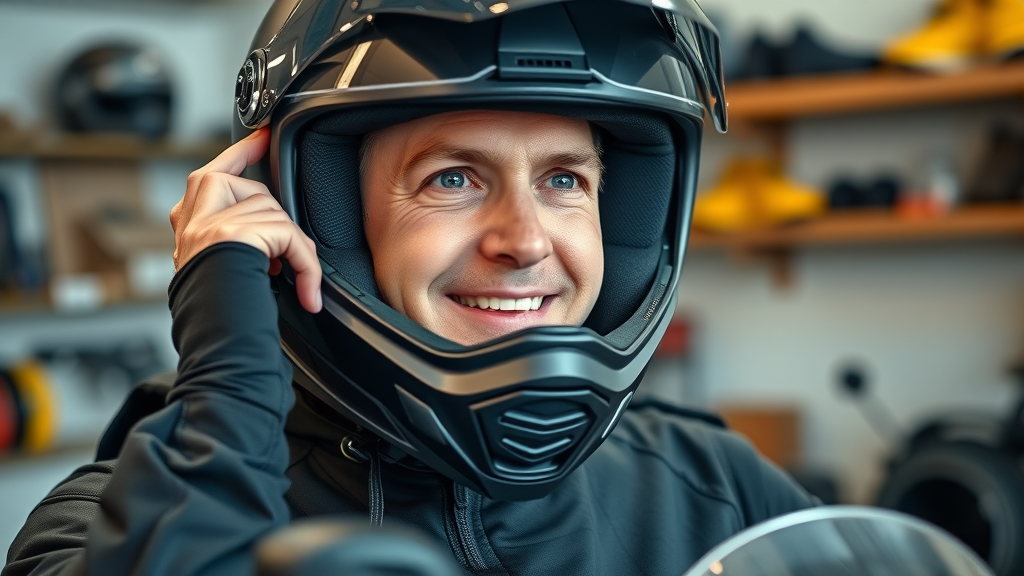
Riding Tips for Traffic, Weather, and Road Hazards
Low Speed Control and Maneuvering for New Motorcycle Riders
Low speed control is often the most challenging—and essential—skill for a new rider. Practicing slow-speed turns with your feet up builds balance and confidence, making it easier to navigate city streets and parking lots. Start with basic maneuvers like U-turns and sharp corners, keeping your eyes up and head turned toward where you want to go. Focus on using a small amount of throttle and feathering the clutch lever, making small adjustments to maintain smooth movement.
Safety is enhanced by practicing in a controlled environment, such as an empty parking lot with cones laid out to simulate obstacles. This allows you to hone your technique without real-world traffic pressure. As your confidence grows, these skills will transfer directly to daily riding—making merging into traffic, negotiating tight spaces, and handling surprise challenges far less intimidating.
-
Practicing slow, controlled turns
-
Building confidence with feet up at low speeds
-
U-turns and parking lot exercises
How to Ride a Motorcycle in Adverse Conditions
Riding a motorcycle in rain, fog, or on slick roads demands preparation and adaptability. The first rule is to stay safe by adjusting your riding style—slow down, increase following distance, and avoid abrupt throttle, brake, or steering inputs. Wet roads reduce tire grip, making it easier to lose traction and harder to recover from a skid. Use both front and rear brakes gently and avoid leaning too aggressively in corners.
Visibility is equally crucial in adverse weather. Wear high-visibility clothing, keep your visor or goggles clean, and use your lights at all times to be seen by car drivers. Be mindful of hazards like puddles, oil slicks, and painted road markings, all of which become more slippery when wet. Lastly, always have a plan for emergency maneuvers: know where you’ll escape if a hazard suddenly appears and practice controlled stops and swerves in safe areas before you need them on the road.
-
Techniques for wet, cold, and slippery roads
-
Visibility tactics in fog or rain
-
Emergency maneuvers in sudden hazards
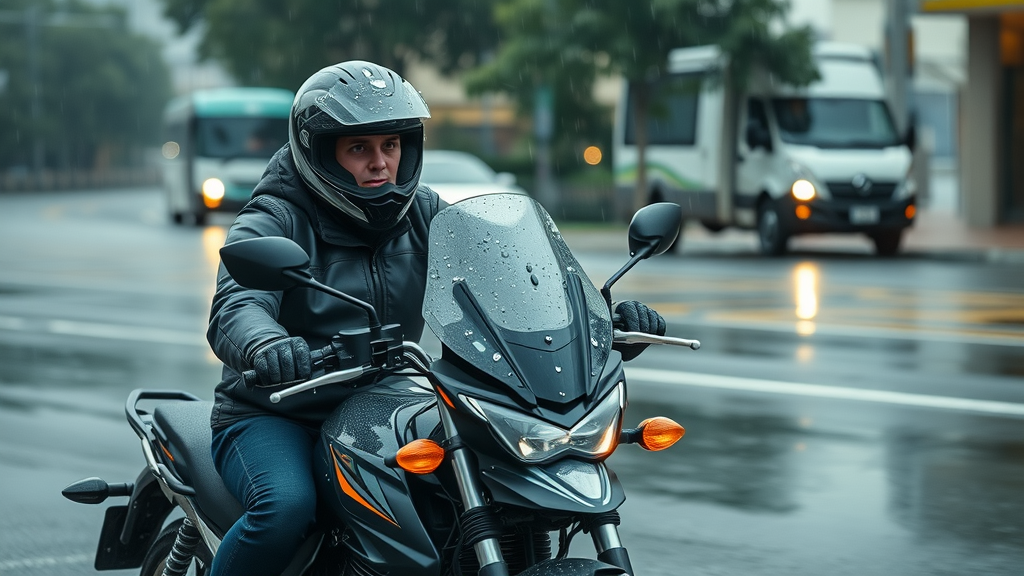
Watch: Mastering Basic Motorcycle Riding Tips for New Riders
Common Beginner Motorcycle Riding Mistakes and How To Avoid Them
New riders often encounter pitfalls that can lead to close calls or even accidents. Overconfidence is a frequent issue: after a few successful rides, it's easy to forget that every new challenge—handling a busy left turn, using the rear brake on slick pavement, or adjusting to a larger engine size—brings unique risks. Regular pre-ride checks are often skipped but are vital for catching issues before they become emergencies. Always inspect your bike briefly for fluid leaks, brake function, and tire wear before rolling out, even if you're riding motorcycles daily.
Other common mistakes include neglecting blind spots, improper low speed balance, and harsh braking. Beginners sometimes forget that cars and trucks may not see them, especially at intersections or during a left turn. Using poor technique—such as grabbing too much front brake or not learning to feather the clutch at slow speeds—can lead to tip-overs or loss of control. The best way to avoid these problems is through consistent practice, a humble mindset, and seeking feedback from more experienced riders or instructors whenever possible.
-
Overconfidence and aggressive riding
-
Forgetting pre-ride checks
-
Neglecting blind spots
-
Poor low speed balance
-
Improper braking techniques
"Most motorcycle accidents occur during the first three months of riding—learning from others' mistakes is your shortcut to safety."
Question & Answer: Beginner Motorcycle Riding Tips (People Also Ask)
How hard is it to ride a motorcycle for beginners?
-
Riding a motorcycle can seem daunting for beginners, but with proper instruction, gradual skill development, and consistent practice, most riders become comfortable in several weeks.
What is the 12 second rule on a motorcycle?
-
The 12-second rule means scanning the road ahead to a distance you’ll travel in 12 seconds, giving riders enough time to identify potential hazards and react safely.
What not to do as a beginner motorcycle?
-
Avoid riding without safety gear, don’t skip regular maintenance, and never underestimate the importance of defensive riding. Also, don’t attempt advanced maneuvers until you’ve mastered the basics.
What is the hardest thing to learn on a motorcycle?
-
Most new riders find low speed control and tight turn maneuvering the most challenging, requiring practice of clutch, brake, and throttle coordination.
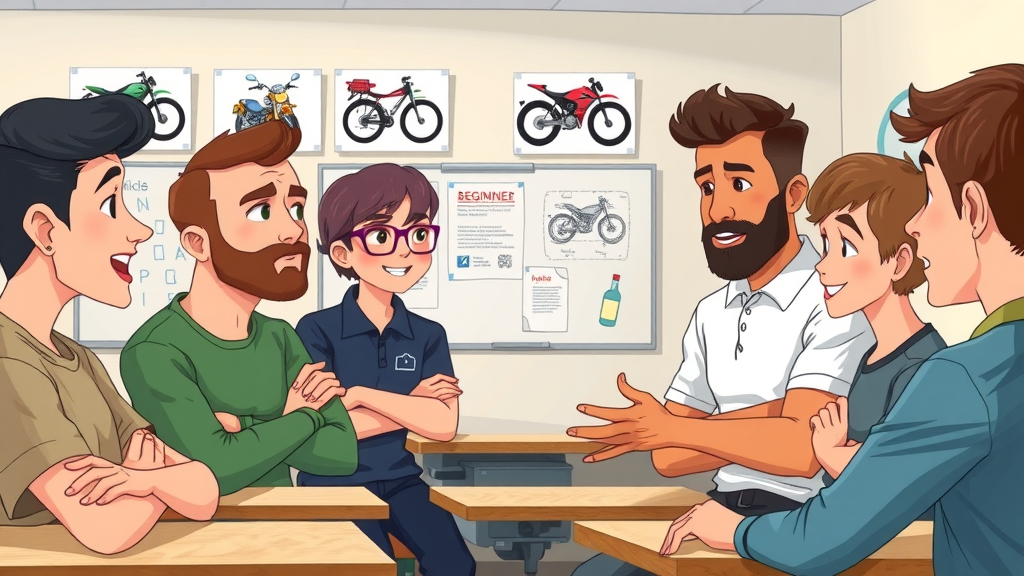
Watch: Essential Motorcycle Riding Safety Gear Explained
Additional FAQs for Beginner Motorcycle Riding Tips
-
How often should new riders practice motorcycle riding tips?
New riders should practice basic skills several times a week, especially in their first few months. Short, frequent sessions in a safe area are more effective than infrequent, long rides. -
What are the top motorcycle riding tips for group rides?
Communicate with everyone beforehand, maintain staggered formation, keep safe distances, and know each member’s skill level to minimize risks while riding in a group. -
Why is counter steering important in motorcycle riding?
Counter steering—pressing the handlebar in the direction you want to turn—is the key to controlling your lean and direction at higher speeds, making cornering much safer and more predictable. -
How does weight affect a beginner’s ability to ride a motorcycle?
Choosing a lighter, smaller bike makes it easier to ride and control, especially at low speeds and during stops or sudden maneuvers. Beginners should avoid bikes that feel overwhelming or too heavy for their frame.
Watch: Pro Instructors Answer Your Top Motorcycle Riding Tips Questions
Advanced Motorcycle Riding Tips to Grow Your Skills
As you gain riding experience , it’s time to deepen your skills with advanced motorcycle riding tips . Mastering counter steering unlocks precision at higher speeds, improving your ability to make a left or right turn safely. Practicing smooth gear shifts and learning advanced emergency braking techniques let you remain calm and controlled during sudden situations. The importance of mental preparation can't be overstated: longer rides require focus, stamina, and the ability to anticipate changing road, weather, or traffic conditions. At this stage, seriously consider joining a motorcycle training course or safety seminar to learn from professionals and refine your technique.
It's equally crucial to upgrade your gear as your skills progress. Consider enhanced protective items like airbag jackets, high-end boots, and integrated comms systems for better connectivity. Most importantly, remain a student of safe riding—seek feedback, study accident reports, and always challenge yourself to learn from each ride. Over time, these advanced habits separate great riders from good ones, making your riding journey safer, smoother, and more enjoyable.
-
Mastering counter steering
-
Smooth gear shifting at higher speeds
-
Mental preparation and focus for longer rides
-
Joining a motorcycle safety course
|
Tip |
Beginner |
Advanced |
|---|---|---|
|
Pre-ride Inspection |
Yes |
Yes |
|
Basic Gear |
Essential |
Upgraded options |
|
Slow Riding |
Practice |
Master |
|
Emergency Braking |
Learn basics |
Unlock advanced techniques |

Practical Beginner Motorcycle Riding Tips Checklist
-
Wear DOT-approved helmet and full safety gear
-
Run pre-ride motorcycle inspection
-
Practice in empty parking lot
-
Follow the 12-second rule
-
Plan safe routes for better riding confidence
Final Insights and Empowerment for New Motorcycle Riders
-
Every successful rider was once a beginner
-
Continuous learning ensures safety and enjoyment
-
Emphasize the value of persistence and education
"The only impossible journey is the one you never begin. Start your motorcycle riding adventure with safety and confidence."
Begin Your Motorcycle Adventure: Put These Beginner Motorcycle Riding Tips into Action
-
Ready to boost your skills and confidence? Apply these proven beginner motorcycle riding tips, keep safety as your compass, and join a rider safety course today for comprehensive training and best practices.
Get started now: Apply these tips on your next ride and share them with fellow new riders. Safety and confidence await—embrace the journey!
To further enhance your understanding and confidence as a new rider, consider exploring these resources:
-
“8 Tips for Beginner Riders” ( cycletrader.com ) offers practical advice on pre-ride inspections and defensive riding techniques.
-
“Our Best Motorcycle Safety Tips” ( riders-share.com ) provides insights into selecting appropriate safety gear and understanding your motorcycle’s controls.
These articles offer valuable guidance to help you build a solid foundation in motorcycle riding.
 Add Row
Add Row  Add
Add 
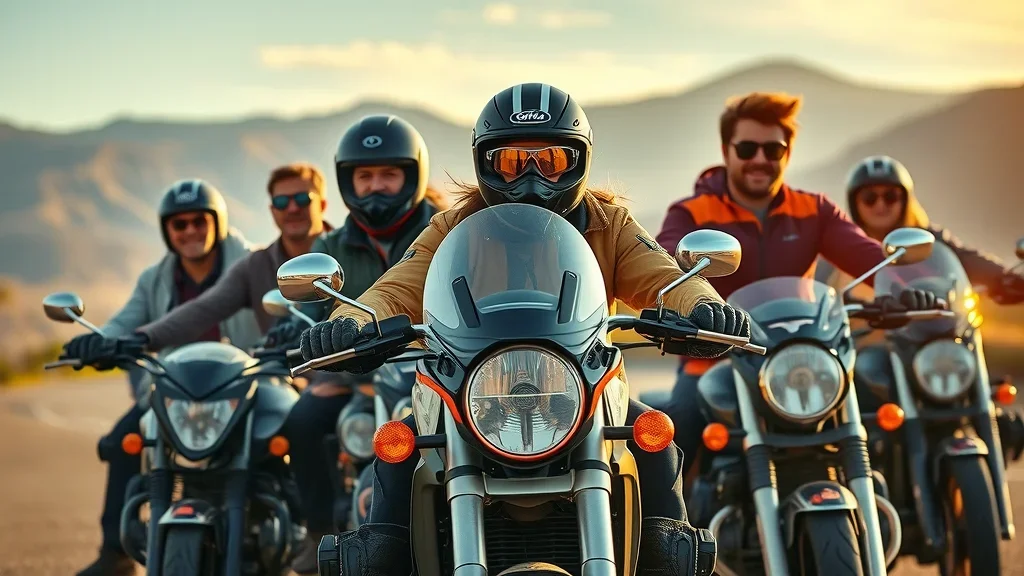

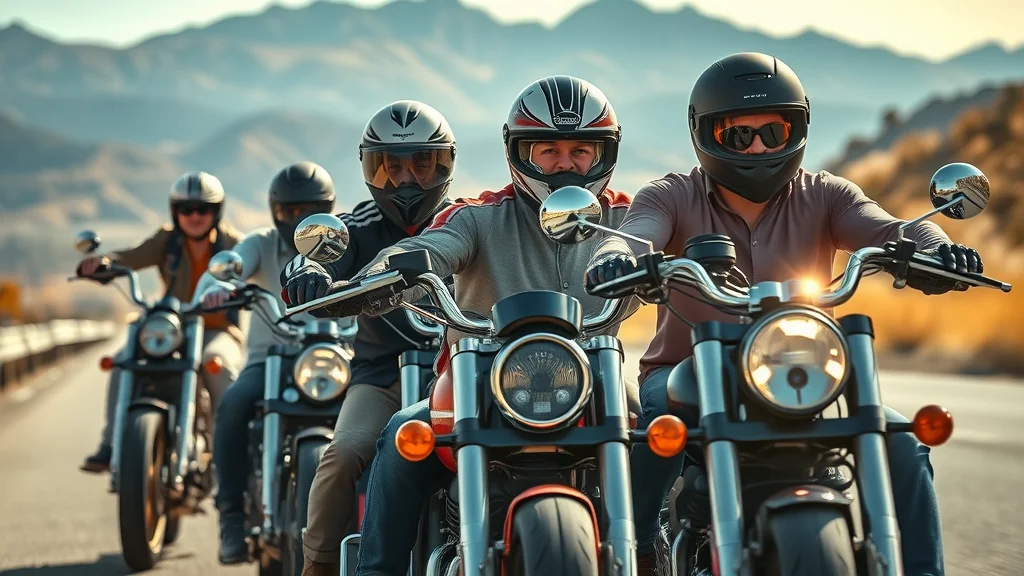
Write A Comment